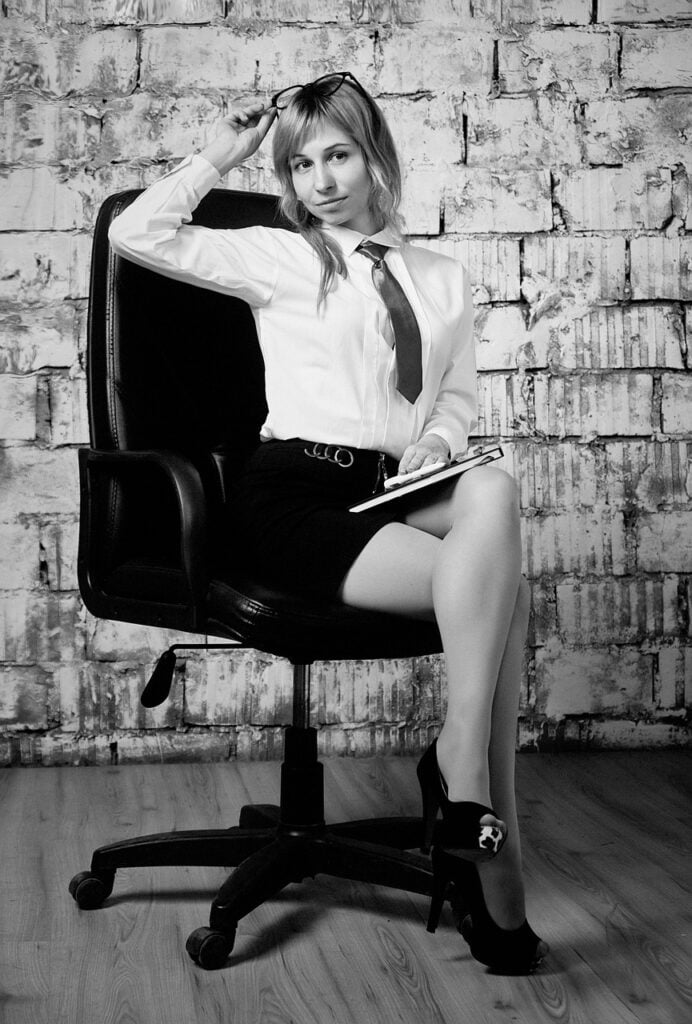I’m here to shed some light on the topic of dress code options. We all know how important it is to dress appropriately for different occasions, whether it’s a job interview, a cocktail party, or a casual outing with friends. But what exactly are dress code options? Well, in simple terms, they are the different styles and guidelines that dictate what is considered suitable attire for various events. From black tie to business casual, the dress code options exist to help us navigate the sometimes-confusing world of fashion etiquette. So, let’s get ready to explore these options and discover the perfect outfit for every occasion!

Introduction
Dress code refers to a set of guidelines or rules that specify the appropriate attire for a particular setting or occasion. It establishes standards and expectations for how individuals should dress in various situations. Dress codes can vary widely, ranging from casual to formal, depending on the context in which they are implemented. They play an important role in shaping our appearance and how we are perceived by others.
Casual Dress Code
The casual dress code is often defined as a relaxed and informal style of dress. It is commonly seen in settings such as social gatherings, outdoor events, and casual workplaces. The key characteristic of casual dress is comfort, allowing individuals to dress in a way that suits their personal style while still presenting themselves appropriately.
Examples of casual attire may include jeans, t-shirts, shorts, sneakers, and sandals. This dress code allows for self-expression and the freedom to wear clothing that reflects one’s personality. It is often preferred by those who value comfort over formality.
Advantages of a casual dress code include increased comfort, which can contribute to a more relaxed and productive work environment. It can also promote a sense of equality and inclusivity, as individuals are not judged based on their appearance. Additionally, casual dress codes may reduce the financial burden on employees who do not need to invest in expensive formal attire.
However, there are also disadvantages to a casual dress code. It may lead to a lack of professionalism, as individuals may become too relaxed in their appearance and behavior. In some industries or professions, a casual dress code may be inappropriate or undermine the desired image of the organization. It is crucial to strike the right balance between comfort and professionalism when implementing a casual dress code.

Business Casual Dress Code
The business casual dress code is one step up from casual attire and is commonly seen in professional office environments. It strikes a balance between formal and informal, allowing individuals to look polished and put-together while still feeling comfortable.
Examples of business casual attire for men may include dress shirts, slacks or khakis, dress shoes, and a blazer or sports coat. For women, business casual attire may include blouses, skirts or dress pants, closed-toe shoes, and cardigans or blazers. It is important to note that the specific guidelines for business casual may vary depending on the company or industry.
The advantages of a business casual dress code are that it presents a more professional image than casual attire while still allowing for some self-expression and individuality. It can also enhance the overall aesthetics of the workplace and contribute to a sense of professionalism and unity among employees.
However, there are also disadvantages to business casual attire. It can be challenging to define and enforce, as interpretations of business casual can vary greatly among individuals. Additionally, some employees may struggle with finding appropriate clothing that fits both the dress code and their personal style. Proper guidelines and clear communication are crucial for successfully implementing a business casual dress code.
Professional Dress Code
The professional dress code, also known as formal or traditional business attire, is characterized by its conservative and polished appearance. It is commonly seen in corporate settings, professional events, and formal occasions.
Examples of professional attire for men may include tailored suits, dress shirts, ties, dress shoes, and accessories such as cufflinks or tie bars. Women may opt for tailored pantsuits, skirts or dresses that fall at or below the knee, closed-toe heels, and understated jewelry. The emphasis in professional attire is on professionalism, elegance, and adherence to tradition.
The advantages of a professional dress code include the ability to convey a sense of competence, credibility, and respectability. It sets a high standard and can create a more formal and serious work environment. Professional attire also provides a level of consistency and uniformity among employees and is often associated with positions of authority.
However, there are also disadvantages to a professional dress code. It can be restrictive and uncomfortable, especially in warmer climates or during long work hours. The cost of purchasing and maintaining professional attire can also be burdensome for some employees. Additionally, a strict professional dress code may limit individuality and self-expression, as it often requires conformity to established norms.

Business Formal Dress Code
The business formal dress code is the most formal and conservative attire, primarily reserved for high-level corporate settings and formal events with a strict dress code.
Examples of business formal attire for men may include tailored black or navy suits, white dress shirts, conservative ties, leather dress shoes, and cufflinks. Women typically wear tailored suits or formal dresses in neutral colors, closed-toe pumps, and minimal accessories. The focus is on projecting authority, professionalism, and adherence to traditional formalities.
Advantages of a business formal dress code include presenting a sophisticated and authoritative image. It creates a sense of respect and professionalism and is often associated with high-status positions or events. Business formal attire leaves no room for ambiguity and sets a clear expectation of the level of formality required.
However, the disadvantages of a business formal dress code are the expense and inconvenience associated with acquiring and maintaining such attire. It can also be physically uncomfortable, especially when required for long hours or in non-air-conditioned environments. The strictness of a business formal dress code may leave little room for individual expression and can contribute to a more rigid and hierarchical work environment.
Black Tie Dress Code
The black tie dress code is typically associated with formal evening events, such as galas, weddings, or prestigious awards ceremonies. It requires a level of elegance and sophistication beyond business formal attire.
Examples of black tie attire for men include a black tuxedo, a white dress shirt, a black bow tie, black patent leather shoes, and optional accessories such as cufflinks or a pocket square. Women often wear formal evening gowns, cocktail dresses, or stylish separates, paired with elegant accessories, high heels, and statement jewelry.
Advantages of a black tie dress code include creating a glamorous and memorable atmosphere, emphasizing the significance and formality of the event. It allows individuals to indulge in more luxurious and fashion-forward attire, showcasing their sense of style. The black tie dress code also ensures a level of uniformity and elegance among attendees.
However, the disadvantages of a black tie dress code lie in the expense and limited opportunities to wear such formal attire. Renting or purchasing a tuxedo or formal evening gown can be costly, and the specific requirements may limit reuse for other occasions. It can also be physically restrictive and uncomfortable, particularly for women wearing high heels or intricate gowns for a prolonged period.
White Tie Dress Code
The white tie dress code is the most formal and prestigious dress code, reserved for exclusive and highly formal events, such as state dinners, royal ceremonies, or operas.
Examples of white tie attire for men include a black tailcoat, a white bow tie, a white formal shirt, black formal trousers, patent leather shoes, and accessories such as white gloves and a top hat. Women typically wear floor-length gowns, often in luxurious fabrics, accompanied by opera-length gloves, elegant jewelry, and sophisticated hairstyles.
Advantages of a white tie dress code include the opportunity to experience the epitome of classic elegance and grandeur. It signifies a highly prestigious event and elevates the sense of occasion. The white tie dress code ensures a level of uniformity and adherence to the highest form of formal attire.
However, the disadvantages of a white tie dress code lie in its exclusivity and impracticality for most occasions. The cost and rarity of white tie attire make it inaccessible for many individuals. The cumbersome nature of the attire, such as the tailcoat and restrictive gowns, can also limit mobility and comfort.
Smart Casual Dress Code
The smart casual dress code strikes a balance between business casual and casual attire, providing a well-groomed and polished appearance while still allowing for some personal style and comfort.
Examples of smart casual attire may include dress pants or chinos, a collared shirt, a blazer or sport coat, dress shoes, and accessories such as a tie or pocket square for men. Women may opt for dress pants or skirts paired with blouses, cardigans, or tailored jackets, as well as closed-toe shoes or boots.
Advantages of a smart casual dress code include flexibility and versatility. It allows individuals to express their personal style while maintaining a level of professionalism. Smart casual attire is often seen as more approachable and contemporary, appealing to a younger and more relaxed workforce.
However, the disadvantages of a smart casual dress code lie in its subjectivity and potential for misinterpretation. The line between casual and smart casual can be blurry, and employees may struggle with finding the right balance. A clear definition and consistent enforcement of the dress code are essential to avoid confusion and maintain a professional image.
Creative Dress Code
The creative dress code is a more unique and expressive style of dress, often seen in creative industries such as advertising, design, or performing arts. It encourages individuals to showcase their individuality and creativity in their attire.
Examples of creative attire may include colorful and patterned clothing, unconventional accessories, unique hairstyles or hair colors, and artistic or statement pieces. The creative dress code allows individuals to experiment with fashion and fully embrace their personal style without the constraints of more formal dress codes.
Advantages of a creative dress code include fostering a sense of individuality, diversity, and creative expression. It can contribute to a more vibrant and dynamic work environment. The creative dress code also allows individuals to leverage their personal style as a form of self-expression and build their professional brand.
However, the disadvantages of a creative dress code include the potential for distraction or ambiguity. Some employees may take the creative dress code too far, leading to outfits that are inappropriate or distracting in a professional setting. It is essential to establish clear guidelines and boundaries to maintain professionalism while still encouraging creativity.
Conclusion
When choosing a dress code, there are several considerations to keep in mind. The nature of the occasion or setting, industry norms, and the desired image of the organization all play a role in determining the appropriate dress code. It is crucial to strike a balance between professionalism and individual expression to create a positive and inclusive work environment.
The impact of dress code extends beyond physical appearance. It can influence employees’ confidence, behavior, and overall work performance. Dress codes can shape the culture of an organization, conveying values and expectations. By adhering to dress code policies, individuals demonstrate respect for the organization and its objectives.
Whether it is a casual dress code that promotes comfort and creativity, a business formal dress code that emphasizes professionalism and tradition, or something in between, dress codes serve as a visual representation of an individual or an organization. By understanding the various dress code options and their advantages and disadvantages, we can make informed decisions and navigate the world of attire with confidence.